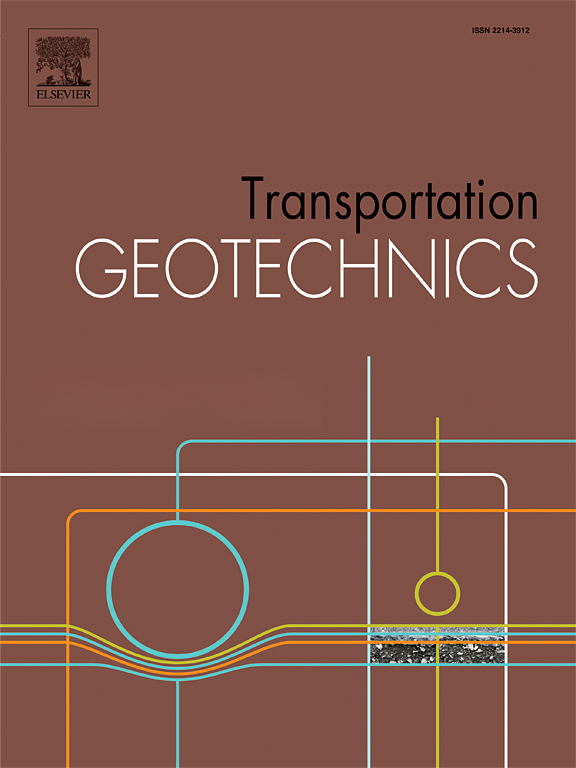Permanent strain behavior of basalt fiber–reinforced controlled low-strength material under repeated loading
IF 5.5
2区 工程技术
Q1 ENGINEERING, CIVIL
引用次数: 0
Abstract
Controlled low-strength material (CLSM) is a flowable, self-leveling backfill material used as an alternative to compacted soil for backfilling trenches, retaining walls, underground cavities, and in pavement construction. This study aims to investigate the permanent deformation of CLSM reinforced with basalt fibers. Basalt fibers with lengths of 6 and 24 mm are incorporated into CLSM mixtures to assess their impact on flowability, setting times, and mechanical properties. Mechanical testing indicates that longer fibers improve tensile strength through a bridging effect. Repeated load triaxial tests are conducted to evaluate the permanent strain behavior under repeated loading. The results show that permanent strain increases with the deviator stress and number of loading cycles. A regression model accounting for the number of loading cycles and deviator stress provides accurate permanent-strain predictions, and the permanent strain behaviors are classified based on the refined shakedown theory. Therefore, the basalt-fiber-reinforced CLSM suggested in this study may be suitable for pavement base material due to its relatively low permanent strain under typical stress conditions.
反复加载下玄武岩纤维增强可控低强度材料的永久应变行为
可控低强度材料(CLSM)是一种可流动、自流平的回填材料,可替代密实土,用于回填沟、挡土墙、地下洞室和路面施工。研究玄武岩纤维增强CLSM的永久变形。将长度为6 mm和24 mm的玄武岩纤维掺入CLSM混合物中,以评估其对流动性、凝固时间和机械性能的影响。力学试验表明,较长的纤维通过桥接效应提高抗拉强度。通过重复加载三轴试验,对重复加载下的永久应变行为进行了评价。结果表明:永久应变随偏应力和加载次数的增加而增大;考虑加载循环次数和偏差应力的回归模型提供了准确的永久应变预测,并基于改进的安定理论对永久应变行为进行了分类。因此,本研究建议的玄武岩纤维增强CLSM在典型应力条件下的永久应变相对较低,可能适合作为路面基层材料。
本文章由计算机程序翻译,如有差异,请以英文原文为准。
求助全文
约1分钟内获得全文
求助全文
来源期刊

Transportation Geotechnics
Social Sciences-Transportation
CiteScore
8.10
自引率
11.30%
发文量
194
审稿时长
51 days
期刊介绍:
Transportation Geotechnics is a journal dedicated to publishing high-quality, theoretical, and applied papers that cover all facets of geotechnics for transportation infrastructure such as roads, highways, railways, underground railways, airfields, and waterways. The journal places a special emphasis on case studies that present original work relevant to the sustainable construction of transportation infrastructure. The scope of topics it addresses includes the geotechnical properties of geomaterials for sustainable and rational design and construction, the behavior of compacted and stabilized geomaterials, the use of geosynthetics and reinforcement in constructed layers and interlayers, ground improvement and slope stability for transportation infrastructures, compaction technology and management, maintenance technology, the impact of climate, embankments for highways and high-speed trains, transition zones, dredging, underwater geotechnics for infrastructure purposes, and the modeling of multi-layered structures and supporting ground under dynamic and repeated loads.
 求助内容:
求助内容: 应助结果提醒方式:
应助结果提醒方式:


